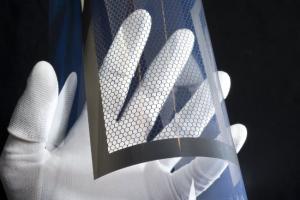The Holst Centre and NeoDec will partner on metallic inks for flexible electronics. NeoDec's conductive ink technology is a complementary technology to the competences of Holst Centre and its industrial
partners and opens new routes to enable roll-to-roll manufacturing of flexible electronic devices such as OLED lighting foils. The partnership will initially run for 2 years, and NeoDec's technology will be further developed within the Holst Centre.
 Printed structures from the Holst Centre
Printed structures from the Holst CentreFor the anticipated flexible electronics applications, like shunt lines for OLED and current collectors for thin-film photovoltaics, commonly used metallic inks require temperature-based post-curing. This to enhance the conductivity of the printed metallic structures to the required level. In particular in case of foil based electronics, the post-curing temperature is limited by the allowable processing
temperature of the polymer substrates.
The patented NeoDec technology was developed at the Eindhoven University, and it enables cost-effective patterning of metallic structures based on their proprietary process. A unique feature of this technology is the room-temperature post-curing for obtaining the highly conductive
metallic structures. The NeoDec process is compatible with inkjet and rotary screen printing, making it very useful for high-throughput roll-to-roll manufacturing of plastic electronics.

